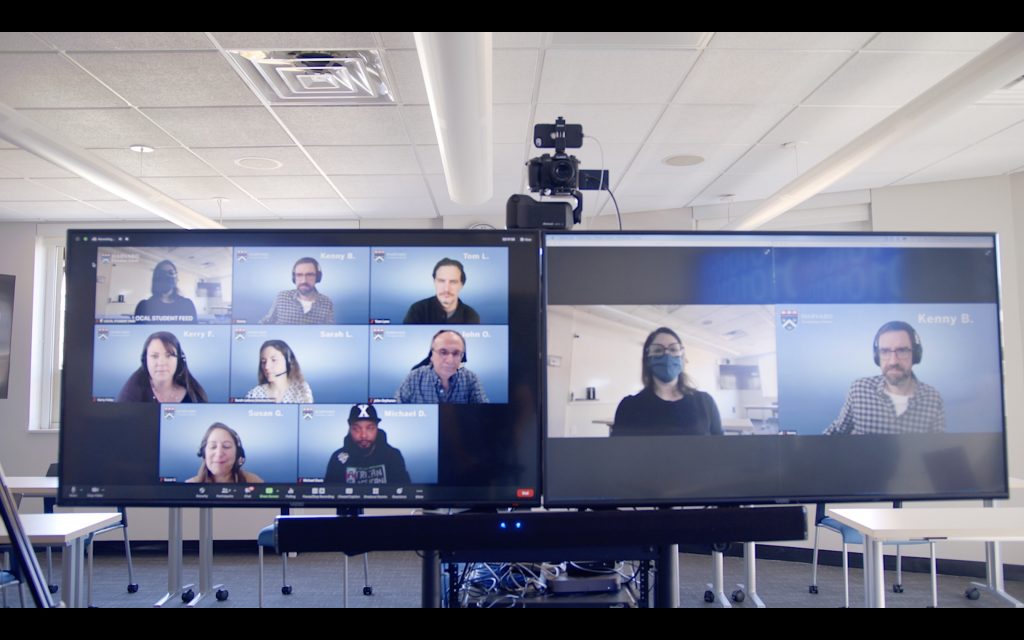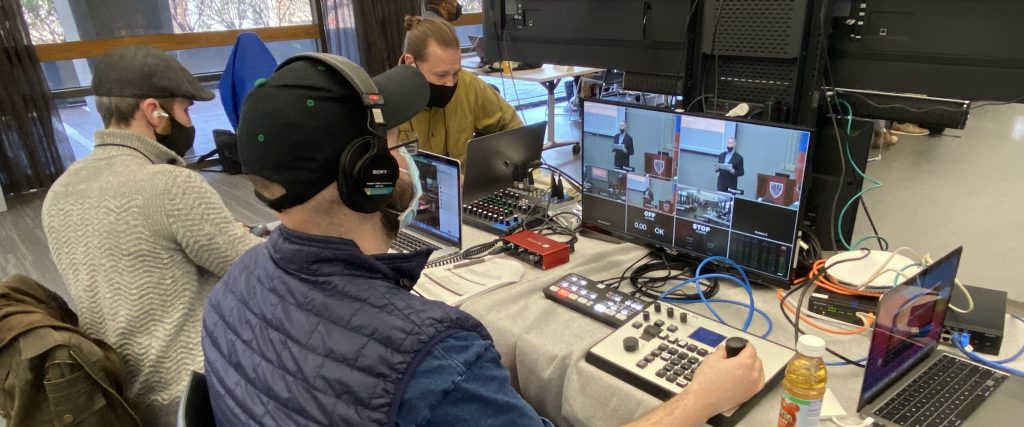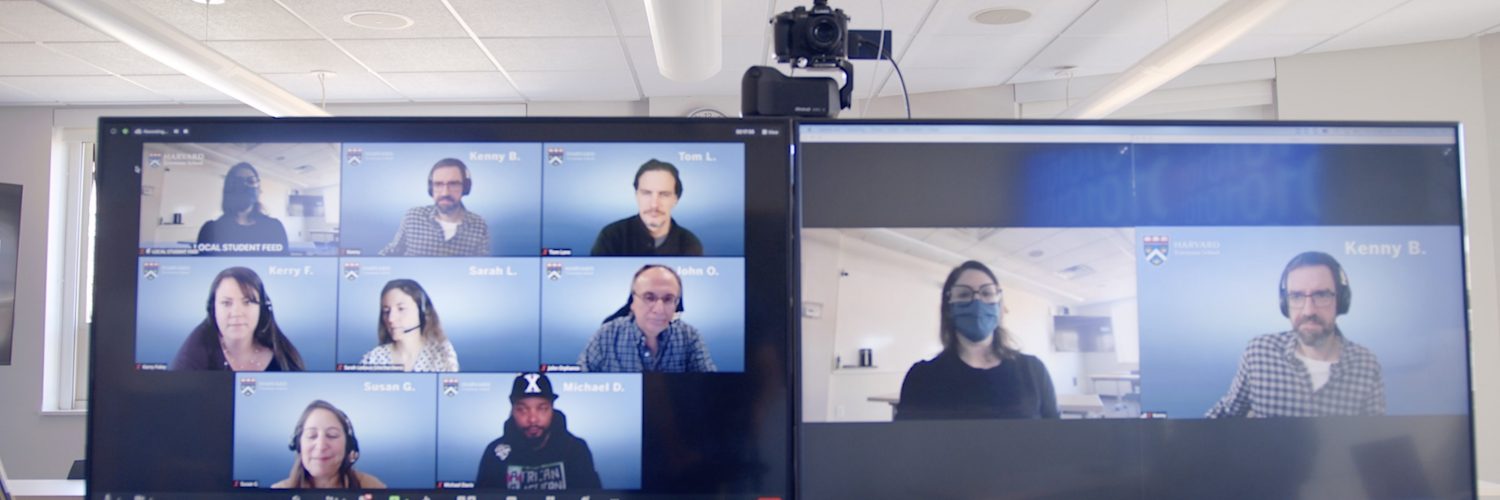By Christian Wisecarver and Christian Franco, Harvard University, USA.
Harvard’s Division of Continuing Education offers high-quality, hyflex courses in a format that we call HELIX (“Harvard Extension Live Interactive eXperience”), a methodology designed to create equity and flexibility around three subsets of students. Students enrolled in our HELIX Classroom courses can opt to attend in-person class meetings on campus, participate in real-time via Zoom, or learn asynchronously as their schedule permits, and these students may change how they participate at any given time. Our HELIX format has been extremely popular since our pilot back in 2015, but this success has been a double-edged sword, as our finite number of classrooms renovated for this hybrid use-case effectively maxed out the number of HELIX courses we were able to offer in a given week.
Furthermore, we are aware that as hybrid learning becomes more normalized, utilized, and expected in today’s world, universities will be faced with the demand to design, build, and support classrooms with AV infrastructure needed to support this type of learning. But outfitting an existing classroom with the necessary AV components to facilitate effective teaching and learning (where some students are in the room and others are remote) can cost upwards of $100k. Such a project is both time-consuming and costly, as well as impermanent, as AV hardware generally has a lifespan of no more than 5 to 10 years. These problems led us to our driving question:
What if we could take all of the functionality we currently have in our hyflex classrooms and re-create it within a portable version?
While the pandemic certainly highlighted the need for additional hyflex options going forward, this unexpected window gave our team time to brainstorm, design, build and test a creative solution that we call the HELIX Portable Blended Classroom.

Much more than just a simple “zoom call on a cart”, our HELIX Portable Blended Classroom is built around the philosophy that the instructor and all students — meaning those in the physical classroom and those online — need to be able to see, hear and converse with each other in a way that feels natural. Additionally, we want faculty to be able to focus on facilitating, rather than navigating technology.
Our modular solution achieves the functionality that quality blended classes require by implementing multiple cameras, a high quality mic array and audio ecosystem, multiple monitors to display the active speaker, the remote gallery, as well as a content confidence monitor. Given a requirement of only network and power capabilities, we’ve set out to provide institutions the flexibility to transform any space into a blended learning environment at a price point that scales (approximately 10-15k). We don’t view HELIX Portable Blended Classroom as a “one-size-fits-all” solution, rather much like any AV renovation requires space dependent considerations, our next step is to iterate the project, with the intent to design varying form factors better suited for spaces of different size and purpose.
Our Innovation Team feels strongly that the functionality of our Portable HELIX solution can provide an equitable experience for all, and that obtaining feedback from real on the ground, classroom use-cases, will be invaluable in helping to inform areas for improvement with future iterations. Over the past year and a half, we’ve conducted a real-world pilot with Harvard College for three hybrid courses and also ran a two-week hybrid event for an Executive Education program at a local hotel. These experiences have granted us various insights from students and faculty alike, and we plan to use this feedback to iterate our solution going forward. One of our desired outcomes is to produce a blueprint that not only represents our experience, but incorporates our findings so that other institutions can adapt as necessary for their specific needs.

Authors

Christian Wisecarver, Harvard University, Division of Continuing Education, USA.

Christian Franco, Harvard University, Division of Continuing Education, USA.














